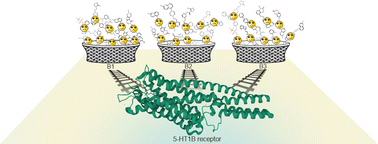Hierarchical analysis of the target-based scoring function modification for the example of selected class A GPCRs†
Abstract
Computational methods, especially molecular docking-based calculations, have become indispensable in the modern drug discovery workflow. The constantly increasing chemical space requires fast, robust but most of all highly predictive methods to search for new bioactive agents. Thus, the scoring function (SF) is a useful and broadly applied energy-based element of docking software, allowing quick and effective evaluation of a ligand's propensity to bind to selected protein targets. Despite many spectacular successes of molecular docking applications in virtual screening (VS), the obtained results are often far from ideal, leading to incorrect selection of hit molecules and poor pose prediction. In our study we focused on docking calculation for the selected class A G-protein coupled receptors (GPCRs), with experimentally determined 3D structures and a sufficient set of known ligands with affinity values reported in the ChEMBL database. Our goal is to investigate how much the energy-based scoring function for this particular target class changes when changing from the default to the re-estimated weighting scheme on the specified energy terms in the SF definition. Additionally, we want to verify if indeed more accurate results are obtained when considering different levels of the biological hierarchy, namely: the whole class A GPCRs, sub-subfamilies, or just the individual proteins while applying default or specifically designed weighting coefficients. The performed calculation and evaluation factor values suggest a significant improvement of docking results for the designed SF definition. This individual approach improves the accuracy of binding affinity prediction and active compound recognition. The designed scoring function for classes, sub-subfamilies, or proteins leads to a significant improvement of molecular docking performance, especially at the level of individual proteins. Our results show that to increase the efficiency and predictive power of molecular docking calculations applied in classical VS, the strategy based on the individual approach for scoring function definition for selected proteins should be considered.

- This article is part of the themed collection: Benchmark Experiments for Numerical Quantum Chemistry


 Please wait while we load your content...
Please wait while we load your content...